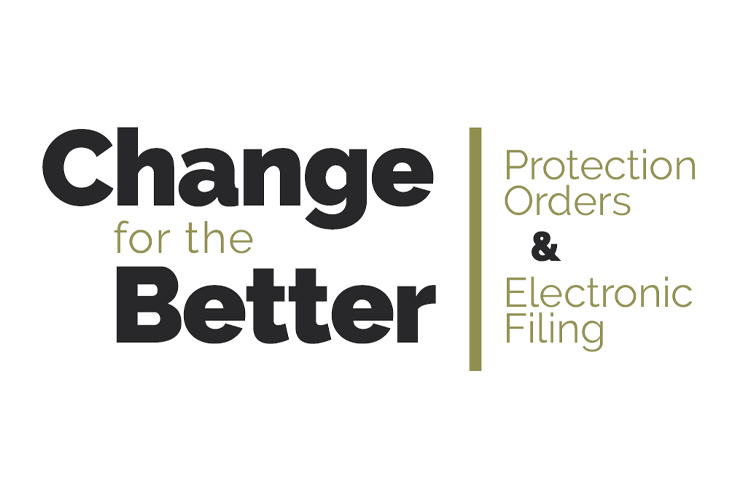By Mary L. DePrez, Director & Counsel | Trial Court Technology

Standardized forms
Indiana courts and clerks have focused their attention on improving and clarifying the laws as well as the actual process utilized to obtain an order of protection. Between 2002 and 2006, the Indiana Judicial Conference Protection Order Committee worked to standardize the forms used by victims and judges in a protection order case. These forms include mandatory federal language from the Violence Against Women Act and coded data that law enforcement enters into the Indiana Data and Communication System operated by the Indiana State Police. IDACS is linked to the National Instant Criminal Background Check System, making Indiana orders available nationwide.
Protection order registry
Building on the work of this committee, Court Technology partnered with the Indiana State Police to develop a statewide electronic registry to house all protection orders. Once a judge issues a protection order, the information is electronically transmitted from the registry to IDACS, ensuring immediate transmission to state and national systems. This new electronic registry was piloted in 2007 in Blackford and Tippecanoe counties. The Indiana General Assembly required all law enforcement agencies and courts to utilize the registry effective July 1, 2009.
E-filing protection orders
In 2015, the Indiana Supreme Court initiated the Indiana E-filing System. This is a system of networked hardware, software, and service providers approved by the Supreme Court. Attorneys and unrepresented litigants may file and serve documents via the Internet into multiple case management systems used by the trial courts. However, due to federal protection for victim information over the Internet, parties were not able to use the e-filing service providers for protection order cases.
In order to allow e-filing in protection order cases, Court Technology developed a unique, targeted electronic service provider for protection orders, collaborating with judges, clerks, victim advocates, and practicing attorneys. This working group focused on three major issues:
- the security of victim information
- the usability of the system by the general public
- gathering the necessary information to assist a judicial officer in either granting or denying a protection order
This self-guided website captures the necessary data needed to complete and generate the forms required to file for an order of protection. Additional features include:
- a ‘Safe Exit’ button that immediately saves the entered data and safely exits the website
- contact information for the nearest advocate agency for assistance, safety planning, and wrap around services
- direct 24/7 access to the National Domestic Violence Hotline
- the option to receive victim notifications when the order is granted, served, or prior to expiration
In addition to focusing on system security and collecting the information critical for the judicial officer, Court Technology sends the data collected from the petitioner to the Protection Order Registry, IDACS, and NICS. When a victim e-files a petition for an order for protection, the clerk no longer has the responsibility of entering the data manually into the Protection Order Registry.
The Protection Order E-filing Service was launched statewide on October 1, 2019, for voluntary filing of PO (adult) and JQ (juvenile) case types. Hamilton, Monroe, Jefferson and Vanderburgh counties volunteered to pilot the system in August with additional counties participating in September.
Now, from the comfort of a safe space, victims of domestic and family violence, stalking, sex offenses, or continued harassment can file for an order of protection electronically through the new Protection Order E-filing Service. This service provides contact information to local advocates as well as a tutorial on how to use the service.
Highlights of the Protection Order E-filing Service
- Access the court from the safety of your home or designated safe space
- “Safe Exit” feature to prevent others from knowing you accessed the site
- 24/7 Access to the National Domestic Violence Hotline
- Domestic Violence agency contact information by county for safety planning and other services
- Access written instructions and video tutorials on how to complete the required forms/petitions
- Generate the required forms for the successful filing of a case
- Receive email notification on the status of the filing (submitted, accepted and granted/denied)
- Receive copy of order granted by the court
- Copies of documents filed with the court are stored
- Unsubmitted petitions are saved and may be updated for 30 days
- Request victim notifications (order granted, order expiring in 60 days, and order served or attempted service)
- Select law enforcement agencies to be notified outside of those required to be notified with the granting of the order
 For additional information on this topic or trial court technology in general, please contact Mary DePrez at 317-234-2604 or
For additional information on this topic or trial court technology in general, please contact Mary DePrez at 317-234-2604 or